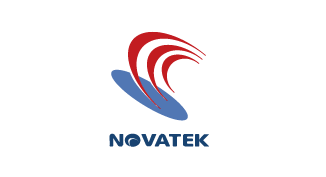AI Case Studies
Semi-conductor
Utilize AutoML and collaborate with process experts from various fields to effectively leverage your process data. Develop AI predictive models to identify quality issue factors, optimize process parameters, simulate parameters before production, and perform virtual measurement of manufacturing outcomes.
Application Scenarios
Process Optimization, Product Quality, Parameter Optimization
Status Quo
The semiconductor industry is a vital economic engine, with its technology powering devices from computers and smartphones to industrial applications, in-vehicle communications, autonomous vehicles, electric vehicles, AIoT, and 5G networks. Driven by continuous advancements, this industry thrives by providing cutting-edge technical support and innovative solutions across diverse sectors.
Challenges
Semiconductor manufacturing faces increasingly stringent demands for process precision, cost control, and delivery times. To maintain an optimal production environment, conduct effective equipment monitoring, and enable fault prediction, extensive monitoring data and rigorous internal controls are essential. These factors pose significant challenges to production efficiency, product quality, and create obstacles in areas such as technology adoption, data security, and talent development.
IC Design: Memory Demand Simulation
Upon completing IC design, computer simulations are necessary to ensure quality; however, due to the extreme complexity of IC circuits, accurately estimating simulation times is challenging. This can lead to scheduling inaccuracies, slower product development, and revenue loss.
Pain Points Analysis:
- Complex Analysis:The vast amount of design data and parameters makes it difficult to analyze using standard statistical methods.
- High Personnel Costs:IC design engineers are expensive, and efficient tools are needed to minimize the time spent on non-design tasks such as analysis and modeling.
Outcome Benefits:
- Effective Modeling: Increases simulation capacity by 20%.
- Rapid Modeling: Reduces analysis and modeling time by 90%.
FDC Fault Prediction and Analysis
FDC faces challenges in accurate equipment monitoring, identifying anomalies, and responding quickly to maintain production efficiency and quality consistency.
Pain Points Analysis:
- High Fault Detection Difficulty: Faults can stem from numerous causes, with related factors often being variable and elusive.
- Impact on Production Efficiency: Faults can lead to production interruptions, quality degradation, and even equipment damage, thereby reducing production progress and product quality.
- Low Efficiency of Traditional Detection Methods: Traditional methods rely on manual monitoring or fixed rules, which may not effectively handle complex production scenarios and are time-consuming and labor-intensive.
Outcome Benefits:
- Model-Based Monitoring: Monitor production processes using models to promptly detect equipment anomalies, reducing production downtime risk and increasing production efficiency by 30%.
- Root Cause Identification: Quickly identify key factors and address root causes, improving product quality by 22%.
Accelerating Copper Wire Packaging R&D
Accelerating the R&D of copper wire packaging faces multiple challenges, including technical difficulties, cost pressures, market demand fluctuations, and competitive pressures. To successfully launch competitive products, researchers and engineers must overcome these challenges and continuously innovate and improve.
Pain Points Analysis:
- Over-Reliance on Experience for Parameter Adjustments: Adjusting equipment and parameters after changing wires often takes a long time. Experienced employees can adjust quickly, while those lacking practical experience may require much more time.
- Complex Process Parameters: Numerous parameters need to be controlled, such as drawing speed, pressure, and welding temperature, which are interrelated. This complexity makes it difficult to accurately determine which parameters affect quality the most, increasing the difficulty of process optimization.
- Increased Trial Costs: Traditional process optimization relies on experience-based adjustments, requiring extensive trial and error experiments. This approach consumes significant time and resources without guaranteeing optimal solutions, resulting in low efficiency in process optimization.
Outcome Benefits:
- Effective Simulation Analysis: Saves 8% in time costs by analyzing parameter combinations through simulations.
- Data-Driven Predictive Analysis: Provides directional guidance for on-site personnel through data analysis and parameter prediction, increasing production efficiency by 10%.



